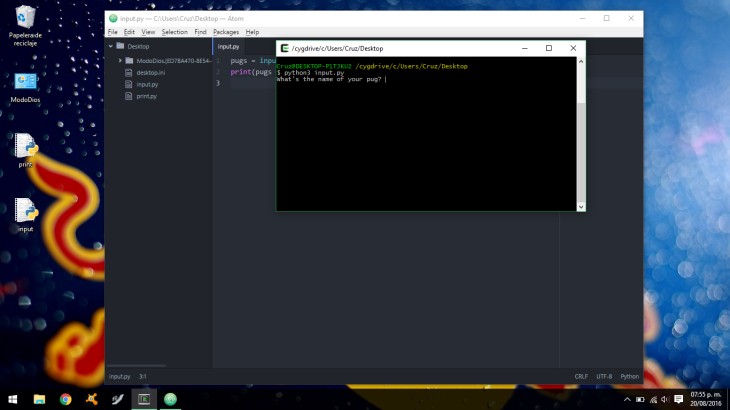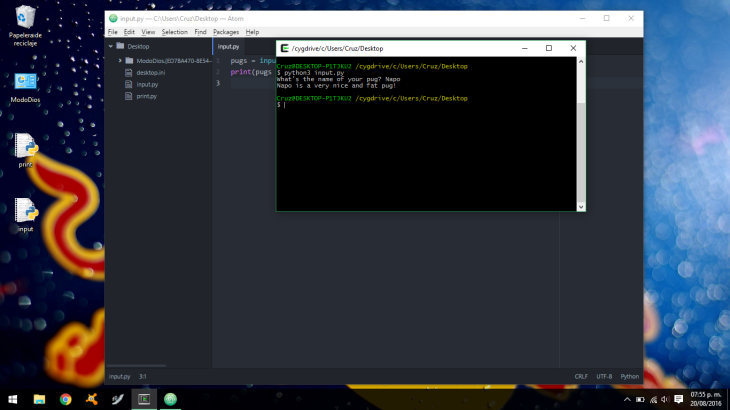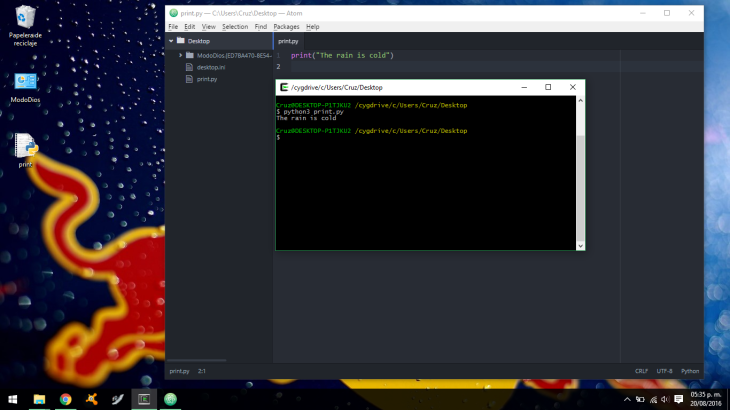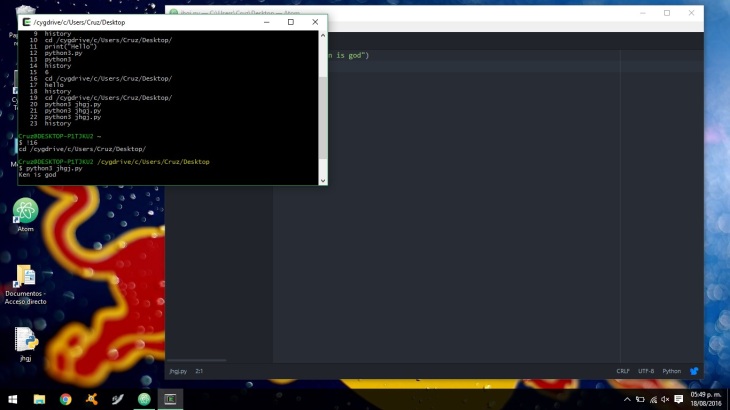--Originally published at Python & pugs

Where does this phrase comes from you may be wondering; well I have the answer for you folks!
Whoe wrote “Hello world” for the first time?
– Brian Kernighan
He used it on a lenguage called BCPL, that it was used while C was being developed.
Hello World was one of the first programs to test C++.
Here’s a little video of Hello World’s example in different languages (Programmings languages :P):








 Finally could make use of #Atom with #Python *insert cool emoji*
Finally could make use of #Atom with #Python *insert cool emoji*

